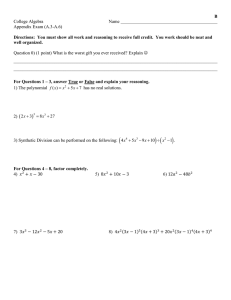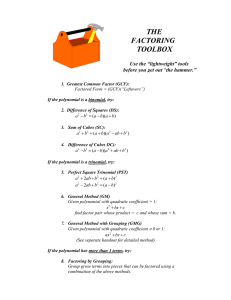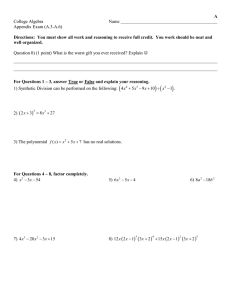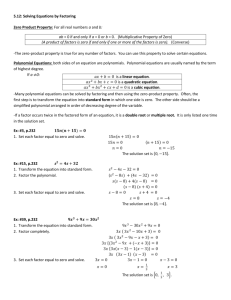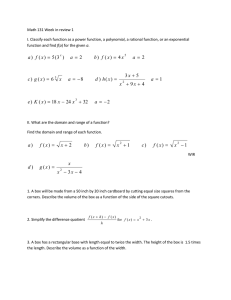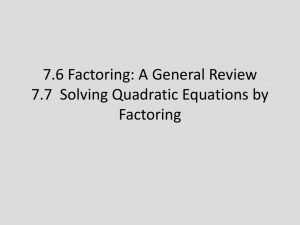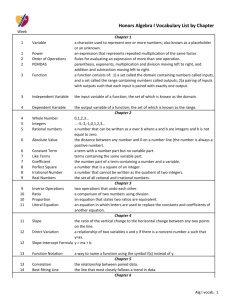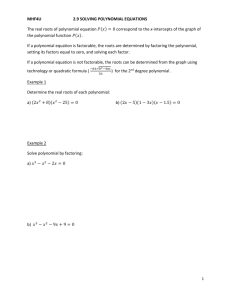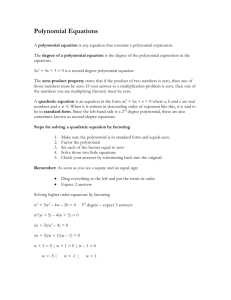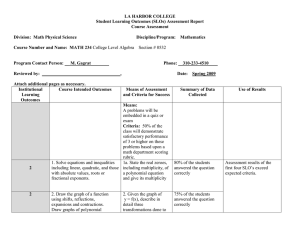Solving Polynomial Equations - MJNS
advertisement
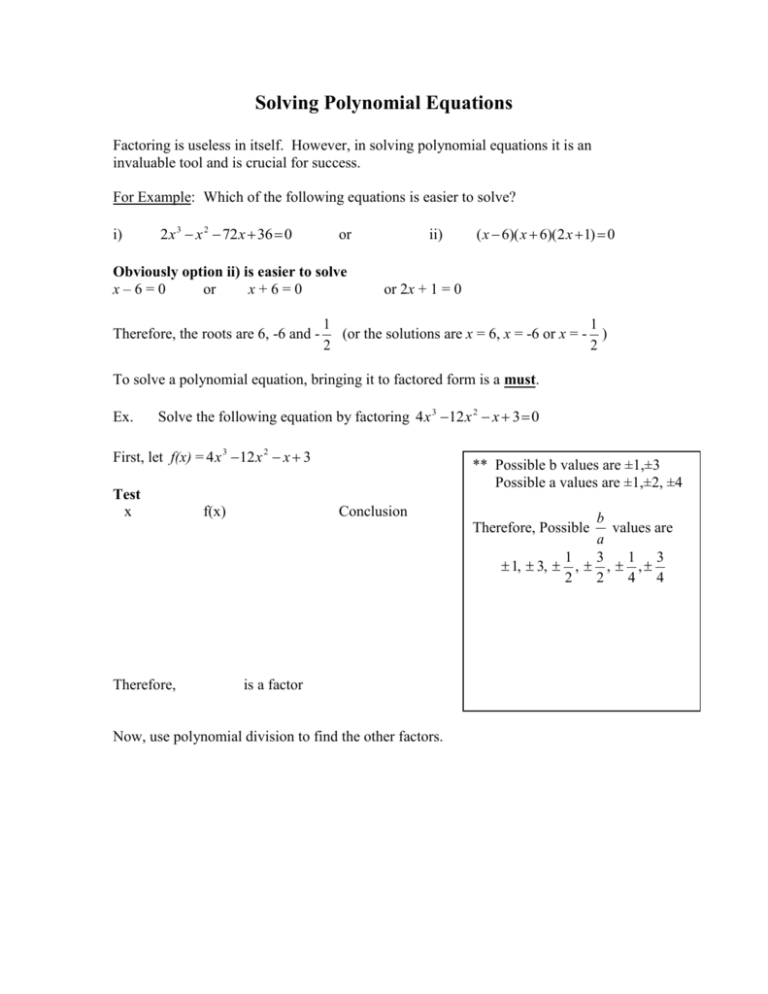
Solving Polynomial Equations Factoring is useless in itself. However, in solving polynomial equations it is an invaluable tool and is crucial for success. For Example: Which of the following equations is easier to solve? i) 2 x 3 x 2 72 x 36 0 or Obviously option ii) is easier to solve x–6=0 or x+6=0 Therefore, the roots are 6, -6 and - ii) ( x 6)( x 6)( 2 x 1) 0 or 2x + 1 = 0 1 1 (or the solutions are x = 6, x = -6 or x = - ) 2 2 To solve a polynomial equation, bringing it to factored form is a must. Ex. Solve the following equation by factoring 4 x 3 12 x 2 x 3 0 First, let f(x) = 4 x 3 12 x 2 x 3 Test x f(x) ** Possible b values are ±1,±3 Possible a values are ±1,±2, ±4 Conclusion b values are a 1 3 1 3 1, 3, , , , 2 2 4 4 Therefore, Possible Therefore, is a factor Now, use polynomial division to find the other factors. Now we can factor fully and solve the equation. What do we do if we can’t fully factor a polynomial equation but still want to solve it? ****REMEMBER – The quadratic formula that will solve ANY quadratic If the quadratic is of the form ax bx c 0 then 2 x b b 2 4ac 2a Let’s try to solve x 3 9 x 2 13x 5 0 Notice that we cannot factor x 2 8 x 5 any further, but there are still real solutions if we set x 2 8 x 5 = 0 and solve. Complex Roots/Solutions: Recall that complex numbers include the square-roots of negative numbers. Simply, i 1 i2 1 Therefore, 36 1 36 i 6 6i Ex. Solve and include any complex solutions: x 3 2 x 2 45 0



